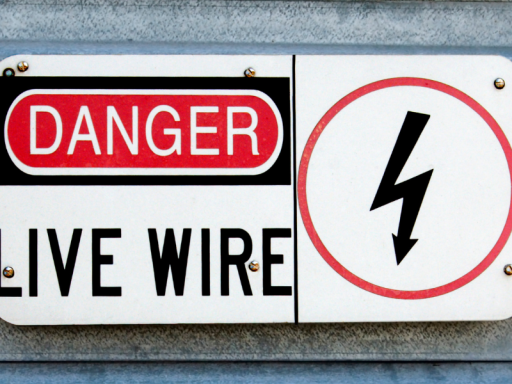What are the hazards?
“Every year accidents at work involving electric shock or burns are reported to the Health and Safety Executive (HSE). Electric shocks do not always cause lasting injury but in certain circumstances can result in death, known as electrocution. The sudden muscular contraction during the shock can result in injuries from, for example, falling. Electric current flowing through the body can cause deep burns.” – HSE, Electricity at Work
As the HSE shows, electric shocks and burns are the hazard you might think of first, but here are a few more that might not be so obvious...
🟠 Fires and Explosions. Electricity can kill or severely injure people, and cause damage to property, from the effects of fires and explosions.
🟠 Electrical arcing (sometimes called a ‘flashover’ or ‘arc flash’). Perhaps as a result of a short circuit caused by unsafe working practices, electrical arcing can generate intense heat leading to deep-seated and slow-healing burns, even if it persists for a short time. The intense ultraviolet radiation from an electric arc can also cause damage to the eyes.
🟠 Arcing, overheating and, in some cases, electrical leakage currents. These can cause fire or explosion by igniting flammable materials. This can cause death, injury and considerable financial loss.
Navigating the Dangers
Most electrical accidents occur because people are working on or near equipment that is:
- thought to be dead (not electrically live or charged) but which is actually live;
- known to be live but those involved do not have adequate training or appropriate equipment to prevent injury, or they have not taken adequate precautions.
Here are some key steps you can take to improve electrical safety in your workplace:
⚡️ Establish a system of rules and procedures wherever electrical work is to be carried out, or ensure that contractors brought in to do electrical work have appropriate rules and procedures. These should be written down and everybody involved must be made aware of them.
⚡️ Provide electrical safety training for all employees. This training should teach employees how to identify and avoid electrical hazards, as well as what to do in the event of an electrical accident.
⚡️ Regularly inspect and maintain electrical equipment. This includes having qualified electricians inspect all electrical equipment on a regular basis and repairing or replacing any faulty equipment immediately.
⚡️ Encourage employees to report any electrical hazards they see. By creating a culture of safety, you can encourage employees to speak up about potential hazards before they cause an accident.
Electrical safety is a serious issue, but it is also preventable. By taking steps to improve electrical safety in your workplace, you can help to keep your employees safe and healthy. If you are a manager or business owner take a look at the free resources linked below from HSE to ensure you and your team are working safely.
What are some of the biggest challenges you face in ensuring electrical safety in your workplace? If you have questions and need expert Health & Safety advice, reach out to us at www.whatnosafety.co.uk
Free Resources:
Health and Safety Executive (HSE) Electrical Safety website
Electricity at Work: Safe Working Practices Guide – HSE

